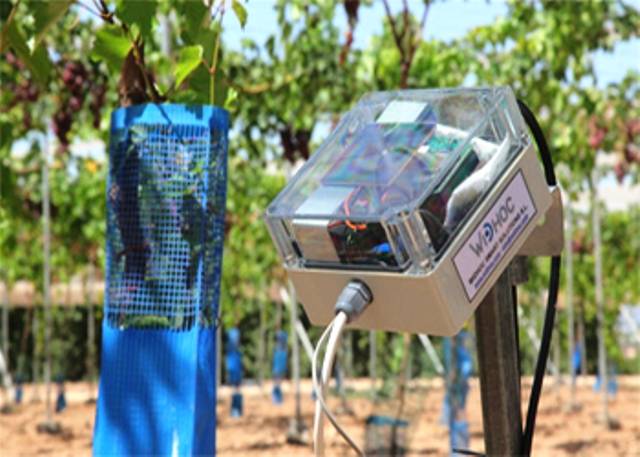
The Department of Information Technology at the University of Huelva (UHU) and the Polytechnic University of Cartagena (UPCT) have developed a smart irrigation system that is able to simultaneously measure soil, air, and water parameters for agricultural crops.
The system, called GAIA2, consists of a network of nodes, each of which works like a small computer that can be configured to measure soil (temperature, moisture) and environmental (atmospheric pressure, room temperature relative humidity) parameters, as well as the quality of the irrigation water.
The key benefit of this system, which comprises a collection of wireless devices, is that it can be set up to analyze various variables based on the crop, allowing for tailored water management solutions. Another advantage is that the nodes can operate as information bridges between nodes in addition to being sensors or data receivers. This capability, referred to as gateway, is utilized to keep track of crops in plots separated by up to ten kilometers.
"The basic goal of the gateway is to ensure communication between the various sensor nodes and the office where the base station receives and interprets the data. In large areas, there may be interference that interrupts or hinder such communication, as with telephones. By acting as a bridge, the gateway ensures that data arrive correctly," explains the expert.
This dual function, receiving, and communication, is another advantage of the device. "In irrigation systems currently available on the market this duality is not an option. What is most usual is to use two different nodes, one for each function," continues the researcher.
From a physical standpoint, the nodes also stand out for their sturdiness. According to the expert, The GAIA2 sensors are designed to be placed at ground level or buried, without fear of breakage when agricultural machinery is used. Furthermore, due to their small size, about 20 centimeters high, there will be no need to remove them during fumigation.
Multi-functionality allows one node network to be used with different types of crops, including vegetables, fruits, and vineyards. It is only necessary to change the type of sensor. For example, if you want to measure the water status of a tree, you will use a dendrometer.
Also read: Micro Irrigation in India











